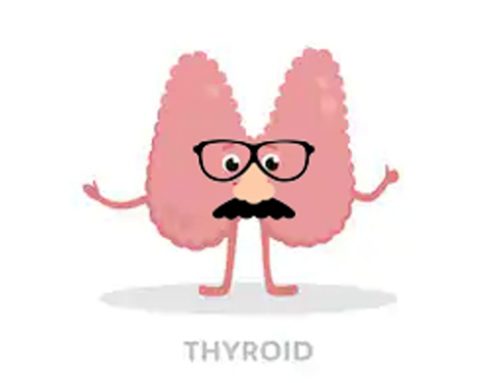by Dr. Tina Marcantel
 The endocrine system is a collection of glands that produce and regulate hormones that control many functions of the body. Once these hormones are released into the bloodstream, they find their way to specific “target cells” and inform those cells what to do next. There are too many different hormones to list them all here, but the following is a brief primer on some of those that are mentioned often in articles on this website.
The endocrine system is a collection of glands that produce and regulate hormones that control many functions of the body. Once these hormones are released into the bloodstream, they find their way to specific “target cells” and inform those cells what to do next. There are too many different hormones to list them all here, but the following is a brief primer on some of those that are mentioned often in articles on this website.
Estrogen
Sex hormones that are present in both men and women, but in significantly greater quantities in women. They perform many functions, but chiefly estrogens affect the reproductive system and are responsible for the female characteristics of feminine curves, breasts, menstruation, and pregnancy. Estrogens are produced in the ovaries (the testes in men) and in smaller amounts in the adrenal gland. The three natural estrogens are estrone (E1), estradiol (E2), and estriol (E3).
Progesterone
A steroid hormone that is produced in women during ovulation or during pregnancy. Small amounts are also produced by the adrenal glands. It has many metabolic functions, and can have a mild sedative effect that promotes calmness and relaxation.
Testosterone
The main male sex hormone, but it is also found in women. It plays an important role in maintaining bone and muscle mass and affects the reproductive system, as well as promoting a sense of psychological well-being.
DHEA
Secreted by the adrenal glands and serves as a precursor to male and female sex hormones (androgens and estrogens).
Cortisol
Often called the “stress hormone,” it is produced in the adrenal gland and helps the body deal with both physical and emotional stresses.
TSH
Thyroid Stimulating Hormone is secreted by the pituitary gland in the brain and causes the thyroid to release thyroid hormone.
T3 and T4
The two major hormones produced by the thyroid gland. Thyroid hormones affect a great number of biological functions in the body.
Hormonal Interactions
We often talk about specific hormone problems as though they can be treated individually, but it’s important to understand that all the hormones interact with and affect each other. Because of that interaction we need to be aware of how all the components of the endocrine system are functioning if we’re to successfully balance the hormones and bring the body into a state of homeostasis. The following are just a few examples of hormonal interactions to help you understand why a holistic approach to treatment is necessary.
*Cortisol and thyroid—We need a proper amount of cortisol in the body in order to allow thyroid to work efficiently. I say that cortisol is like a car that carries thyroid hormone out of the blood and into the cell in order for the thyroid to work. On the other hand, too much cortisol can actually block the passage of thyroid into the cell. This means that before we can get thyroid hormones functioning properly in the body we may first have to make sure that the adrenal glands are healthy and that cortisol levels are where they should be. This can be done by measuring the cortisol with a salivary hormone test.
*Cortisol and progesterone—Progesterone is the “mother” hormone that is a precursor or building block that can turn into other hormones in the body, such as cortisol, DHEA, testosterone, and estradiol. When the body is under chronic stress too much progesterone may turn into cortisol in order to handle the stress, leaving too little of the progesterone to turn into DHEA, testosterone, and estradiol. This results in tests showing low levels of these hormones and the patient may have symptoms that accompany those low levels. I use the analogy that “mother progesterone” feeds the loudest baby (cortisol), and the other children (DHEA, testosterone, and estradiol) decrease in size because all the attention is being given to cortisol.
Another consideration is that if a person has low progesterone we may supplement it to help relax her so she can sleep better at night—progesterone turns into serotonin and then melatonin, promoting sleep. But if her cortisol is low and if she takes the progesterone at bedtime, the progesterone may turn into cortisol and actually keep her awake. For someone who’s taking progesterone at night and experiencing sleep problems I suggest they take the dose during the day to allow it to properly act in the body before bedtime.
*DHEA and testosterone—In the female body DHEA will turn into testosterone as needed. That’s why when a woman has low testosterone I prefer to give her DHEA instead of supplementing testosterone; this allows the wisdom of her body to turn DHEA into the amount of testosterone it needs. This can prevent the effects of too much testosterone such as facial hair, acne, or male pattern baldness.
Hormonal interactions can also cause a variety of symptoms that can make a proper diagnosis of imbalances a challenge:
*Hot flashes can be a symptom of not enough estrogen; but they can also occur from too much cortisol and/or too much estrogen.
*Chronic low DHEAS and/or testosterone levels may suggest adrenal fatigue, particularly if cortisol is also low and symptoms are indicative of low adrenal function.
*When the amount of estrogen is higher than the amount of progesterone, resulting in a low ratio of progesterone to estrogen, the decreased ratio can mimic symptoms of hypothyroidism such as unusual weight gain or chronic fatigue.
As you can see by these examples, diagnosing and treating hormonal imbalances can be challenging at times because there are so many different hormonal interactions to consider. Still, with patience and good communication between you and your doctor about symptoms and how you are responding to your treatment plan, you can find the balance and the quality of life and health that you’re seeking.





